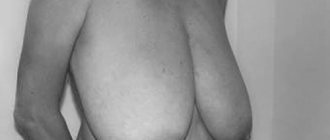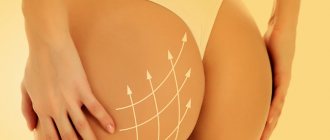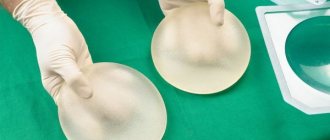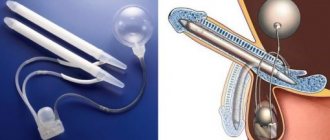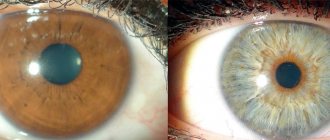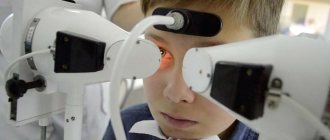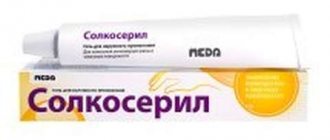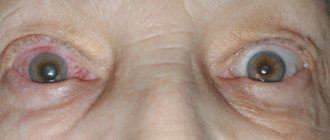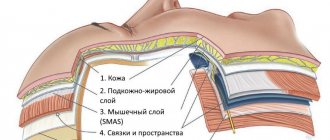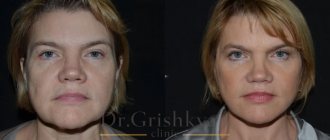Adamyan Ruben Tatevosovich
Education: 1985 - 1986 — internship in surgery at the Medical Unit named after the XX Party Congress in Kirov, Kirov region.
Foreign internships:
- Paris (France) plastic surgery (Professor Marchak)
- Virginia (USA) plastic surgery (Professor Gilbert)
- Stuttgart (Germany) plastic surgery (Professor Gubisch)
- Bohn (Germany) plastic surgery (Professor Richter)
- Munich (Germany) plastic surgery (Professor Feller)
- Savonna (Italy) hand surgery (Professor Mantero)
Biographical information:
- 1986-1988 - surgeon in the department of emergency microsurgery of the All-Union Scientific Center of Surgery of the USSR Academy of Medical Sciences (now the Russian Scientific Center for Surgery named after Academician B.V. Petrovsky) on the basis of City Clinical Hospital No. 51 and 71.
- 1988—1991 — junior researcher at the department of planned microsurgery of the All-Union Scientific Center of Surgery of the USSR Academy of Medical Sciences (now the Russian Scientific Center for Surgery named after academician B.V. Petrovsky).
- 1991-1996 — senior researcher at the department of planned microsurgery of the All-Union Scientific Center of Surgery of the USSR Academy of Medical Sciences (now the Russian Scientific Center for Surgery named after academician B.V. Petrovsky).
- 1996-1997 — Leading researcher at the department of planned microsurgery of the All-Union Scientific Center of Surgery of the USSR Academy of Medical Sciences (now the Russian Scientific Center for Surgery named after academician B.V. Petrovsky).
- 1997—1999 — Chief researcher of the department of planned microsurgery of the All-Union Scientific Center of Surgery of the USSR Academy of Medical Sciences (now the Russian Scientific Center for Surgery named after academician B.V. Petrovsky).
- 1999-2009 - Head of the Department of Microsurgical Autotransplantation of Tissues in the Department of Restorative Microsurgery of the Russian Scientific Center for Surgery named after. acad. B.V.Petrovsky.
- Since 2022 - Head of the Department of Reconstructive and Plastic Surgery of the Russian Scientific Center for Surgery named after. acad. B.V.Petrovsky.
Scientific activity:
- Permanent participant in Russian and Foreign forums and congresses, as section chairman and speaker.
- Scientific supervisor of 12 dissertations
- OPREKH (Russian Society of Plastic Reconstructive and Aesthetic Surgeons)
- Association of Surgeons named after. N.I. Pirogova
- AAPREH (Armenian Association of Plastic Reconstructive and Aesthetic Surgeons) – honorary member
- Journal "Annals of Plastic Reconstructive and Aesthetic Surgery" - Scientific Secretary
- Journal "Andrology and Genital Surgery" - Member of the Editorial Board
- PAAR (Professional Association of Andrologists of Russia)
- Problem Commission on Microsurgery of the Scientific Council on Surgery of the Russian Academy of Medical Sciences and the Ministry of Health
- ISAPS associated member, IPRAS associated member
- AUA (American Urological Association) – active member
Author of more than 400 articles on plastic and reconstructive microsurgery. Co-author of 3 monographs, 18 RF Patents for original developments in plastic and reconstructive surgery
Professional achievements and recognition:
1991 - dissertation for the degree of Candidate of Medical Sciences 1997 - dissertation for the degree of Doctor of Medical Sciences 2005 - professor in the specialty "Surgery"
Information about awards and incentives:
Honorary title “Breakthrough of the Year RSCH - 2018”
Specialization in plastic surgery:
- facial plastic surgery;
- facelift (SMAS-lifting);
- blepharoplasty;
- rhinoplasty;
- plastic surgery of ears;
- breast surgery;
- breast enlargement;
- mastopexy;
- endoprosthetics with mastopexy;
- reduction mammoplasty;
- body plastic surgery;
- torsoplasty;
- liposuction;
- abdominoplasty;
- intimate area;
- intimate plastic surgery for women;
- intimate plastic surgery for men;
- gender change.
Global improvement: report from the operating room
Correct the oval of the face, the shape of the breast, remove drooping eyelids and the stomach in one day. Surgeons at the K+31 clinic take on plastic surgery with four hands - and we show how it was. In December, we announced a joint project with the K+31 clinic, within the framework of which one of our readers will have the opportunity to improve several parts of the body for free from first-class surgeons: professor, MD. Ruben Adamyan and Ph.D. Igor Gulyaev. We warn the impressionable, there will be a lot of anatomically revealing photos ahead.
Almost everyone who submitted an application to participate was invited to a consultation. After examining more than twenty volunteers, the doctors chose Elena Maksimova:
This year she will turn sixty years old.
Elena:
— I worked as an Aeroflot flight attendant for many years; in 1980, our crew transported athletes and guests of the Olympic Games, which were held in Moscow. It’s a pity that those flight photographs have not survived. And those admiring glances too.
In this photo, Elena is twenty-five.
Over the past five years, my face and body have changed noticeably - and not for the better: the oval of my face has dropped, my upper eyelids have drooped, my breasts have lost their shape. I started changing my haircuts, dyed my hair brown, blonde, and one day I got out of the shower and realized that I can’t look at myself like that anymore, I’m going to save up for surgery.
Ten years ago I already had blepharoplasty, so I didn’t have any worries – oh, oh, plastic surgery. I started studying reviews on the Internet about different clinics and doctors and suddenly came across an article about recruiting volunteers. (No, I haven’t read Beauty Insider before. I’ll probably start now:) I asked my daughter to submit an application. She, of course, was skeptical: “Mom, you’re crazy, there will be so many people willing, don’t waste your time!”
And I felt: no, I’ll be lucky!
I immediately liked Doctor Ruben Tatevosovich and Igor Valerievich. In their office you feel not like you are at an official reception, but like you are visiting old friends.
Pros, cons and features of combined plastic surgeries
- Pros: the patient does not have to undergo diagnostics several times, experience stress, endure anesthesia and the recovery period, take vacations several times and take time away from work.
- Cons: the more tissue is injured and the longer a person is under anesthesia, the higher the risk of complications.
Not all types of operations can be combined. For example, abdominoplasty and buttock prosthetics are not allowed, since for this the patient would have to be turned over on the operating table. It is not advisable to combine a facelift and rhinoplasty, endoscopic forehead lift and upper blepharoplasty.
Igor Valerievich: “During a facelift, we separate the skin over a fairly large area and thereby severely disrupt the blood supply. Nutrition of the damaged skin flap occurs mainly due to the vessels of the central part of the face. If you do rhinoplasty, the central part will swell and will not be able to supply it with blood. Ischemia of the wound edges may occur.
The situation is similar with endoscopic forehead lift and upper eyelid surgery. If you first tighten the forehead and then remove the excess skin of the upper eyelid, two to three months after the operation it will droop slightly and the excess will reappear. If you do the opposite, the forehead will pull the upper eyelids with it, and this may affect the quality of the scar.”
No more than three treatment zones can be combined in one operation.
Igor Valerievich: “As a rule, we limit ourselves to two. The optimal combinations are stomach and chest or chest and face. In Elena’s case, the volume of intervention will be large: SMAS face lift, upper blepharoplasty, breast lift with endoprosthetics and abdominoplasty. In our case, the risks will be mitigated by the fact that two teams of surgeons will work simultaneously. I think we can do it in five to six hours. And, of course, we decided to carry out such a large-scale operation, knowing that the clinic has an intensive care unit to monitor the patient’s condition on the first day after.
Elena underwent the necessary examinations: duplex scanning of blood vessels, ultrasound of the mammary glands and anterior abdominal wall (to make sure there were no hernias) - no pathologies or chronic diseases were discovered.
Ruben Tatevosovich: “Combining so many manipulations within one operation is a rare case for us. Not because few people need to correct several problem areas at once - rather, on the contrary. Patients often come with the request “to look good on the beach”, having ptosis of the mammary glands, abdominoptosis, and excess subcutaneous fat. We could do combined operations more often, we have all the capabilities for this, but such a global improvement is financially expensive.”
For four-handed operations, it is especially important that surgeons have extensive experience working together.
Igor Valerievich: “Plastic surgery is a team game. How long the operation will last and how beautiful the result will be depends on how coordinated the actions of the surgeons and assistants are.
I always feel comfortable working in tandem with Ruben Tatevosovich, he is my teacher and mentor. I know his every next step. Technique, manner, pace of work. To understand his thoughts, it seems to me that I don’t really need words.”
Elena:
“When Igor Valerievich called me and congratulated me on being chosen to participate in the project, I was confused and forgot how to talk. “Aw! Are you on the line? - I told him: “I want to be beautiful, will you knock off ten?” He told me: “Well, the twenty will probably fly away...”
At the preliminary meeting, we discussed the action plan again. I wanted to return the same breast volume that I had in my youth: size 2-2.5. The doctor said that without implants you can only count on 1.5, and with them - 3 or more. “But I don’t know how I’ll feel with the third one,” I said. “You will feel good :)”
Igor Valerievich: “We settled on a relatively small endoprosthesis with a volume of 360 cc of the Silimed brand. Women often ask what breast size this or that implant corresponds to. I'm wondering what size line do you follow? French threesome? German... or Russian? No, this is all nonsense. The same endoprosthesis looks different on different women. Elena’s bra cup after the operation will approximately correspond to size C.”
Elena:
— The operation was scheduled for February 14, Valentine's Day. I thought this was a good sign and was almost not worried. In general, I’m not afraid of anything except flying over water)) They told me to go for surgery - I put on compression stockings and went. I'm always positive! I was just too shy to take pictures.
The doctors found some right words and joked encouragingly: “There is no beauty without blood.” I love people with a good sense of humor.
When I found myself in the operating room, I had only one thought: how would I fit on this small table! The anesthesiologist asked my weight (is he really worried about the same thing??). I answered and hung up almost immediately.
Two teams of doctors donned sterile surgical gowns and gloves.
Ruben Tatevosovich has a binocular magnifying glass in front of his eyes. Typically, surgeons wear it before operations that require precision down to the millimeter (for example, before blepharoplasty), but Ruben Tatevosovich always works in it. The magnifying glass brings the wound closer several times and allows you to seal the smallest vessels and adapt the edges of the wound well.
SMAS lifting of the middle and lower third of the face
Comment by Ruben Tatevosovich
I mark the incision line and the area of skin detachment. We will work with four zones: parietotemporal, middle and lower third of the face, part of the neck. I mark using ordinary brilliant green: it is sterile and does not rub off from the skin.
To reduce bleeding in the manipulation area, I inject a solution with adrenaline.
I make an incision from the temporal region downwards: I go around the tragus of the ear, follow the contour of the lobe, return back to the scalp and peel off the skin.
Next I work with a structure called SMAS (Superficial Musculo-Aponeurotic System) - the superficial muscular-aponeurotic layer. (Muscles that are located under the subcutaneous fat and determine the contours of the oval of the face. - Ed.)
When doing a facelift, the surgeon can tighten either the skin only or the skin + SMAS. The second option gives a more stable result. This can be done in two ways: pull the SMAS to the fixed subzygomatic area and secure it (the method is called SMAS plication). Or excise the excess (SMAS resection). That is, SMAS lifting means a surgical facelift with smas resection or smas plication.
Which type to choose depends on many factors. If I pick up the SMAS with tweezers and feel that the tissue is hypermobile, I cut off the excess. In other cases, I usually decide not to disturb its anatomical structure and stitch it up. From experience, I can say that tension appliqué seams give a better and more durable effect.
I am doing SMAS plication for Elena.
Then I create a new shape for the cervical-chin angle and tighten the tissues of the middle and lower third of the face - but not too much. Otherwise, the scar may suffer and the face will look overtightened. And we need a natural result.
I fix the edges of the wound with a device for applying skin staples, similar to a stapler.
We still have excess skin, some of it needs to be excised, and the rest needs to be formed into a beautiful ear tragus.
Using a ruler, I measure the length to the lobe so as not to cut off excess.
I make the final seam and everything is ready.
At this time: abdominoplasty
Comments by Igor Valerievich
Patients often ask to explain the difference between liposuction and abdominoplasty. In the first case, we remove only excess fatty tissue with cannulas, making small punctures. Abdominoplasty is a more extensive operation. Along with the fatty tissue, excess skin is removed and the muscles of the anterior abdominal wall are tightened.
I peel off the subcutaneous fatty tissue from the aponeurosis, moving towards the navel. This is the longest stage of the operation (lasts about an hour).
To work I need an electrocoagulator. Monopolar ("electroknife") cuts tissue, and bipolar cauterizes blood vessels. Control - using pedals. Almost like “gas”-“brake” in a car:
Music helps you stay focused. The playlist on the iPad includes everything from the Backstreet Boys to Bruno Mars and his “Girl you are amazing just the way you are.”
Previously (before the advent of electrocoagulation), surgeons cauterized small vessels with hydrogen peroxide, and bandaged the larger ones - imagine how many threads they got.
Next, I stretch the skin-fat flap and cut off the excess, focusing on the upper edge of the marking.
In addition to the rectus abdominis muscle, I usually work with the oblique muscles (I do “lateral tension”, suturing the aponeurosis in the projection of the oblique muscles). This will emphasize the patient's waist.
The most precious part is the formation of the navel in a new place.
I install drainage tubes (needed to pump out accumulated fluid during the first 24 hours after surgery) and stitch up the incision. The ideal seam “fits” into the natural fold of the abdomen. Elena's navel is physiologically located higher than usual, so the seam will be a little higher than we would like, but it will not be visible from under the underwear.
Sterile stickers are glued to the seam to fix and close the edges of the skin wound.
It is important to elevate both ends of the operating table to reduce tension on the wound edges.
Upper blepharoplasty (at this time: facelift is completed, Igor Valerievich moves from tummy tuck to chest surgery)
Comment by Ruben Tatevosovich
I make an incision in the crease of the upper eyelid and excise the excess skin - just such a thin strip. After healing, the seam will be invisible because it will hide in the natural crease of the eyelid.
I close the incision with a curved surgical needle.
Usually, during blepharoplasty, interrupted sutures are applied: tie a knot, next to it is another one, and another. But they may leave traces on your eyelids. I make a continuous seam. When removing it, it will be enough to simply pull the thread.
Mastopexy with endoprosthetics (at this time: Ruben Tatevosovich completes blepharoplasty)
Comment by Igor Valerievich
A breast lift is considered a complex operation (if one can assume that there are easy ones). There are different methods, but in general they boil down to one thing: excess skin must be removed, the nipple and areola must be transferred. A “pattern” is made on the chest, and the surgeon works like a tailor. The shape of the pattern depends on the original “style”. For second-degree ptosis (the nipple is located above the inframammary fold), a vertical incision is usually sufficient. If the mammary gland is large and strongly drooping, a T-shaped or anchor mastopexy is performed. Elena has a significant excess of breast skin, but we are planning to undergo endoprosthetics. Therefore, the most suitable option is vertical mastopexy according to Dr. Hammond’s method.
Using a metal marker, I mark the diameter of the future areola.
I make an incision with a scalpel along the marking and prepare a pocket for the implant under the pectoralis major muscle (and not under the gland, as is sometimes done): firstly, it is safer to form a cavity there, and secondly, this allows you to fill the upper pole of the breast - something that patients usually like it.
This is my first time working with a Silimed brand implant. I like its softness (the breasts will not feel different from natural ones to the touch) and the shell - not too rough, but not smooth either.
I move the areola to a new place, higher than it was.
I lift the top of the operating table so I can assess the shape of the breast under the influence of gravity.
Vertical mastopexy according to Dr. Hammond's method has an advantage over the classic T-shaped one. Excessive tension of the skin - as at the junction of a vertical and horizontal seam - does not occur, and accordingly, the risk of unsightly scars is lower.
After the operation, a bandage is put on the abdomen and a top with a clamp on the chest - it is similar to a sports top, but made of thicker fabric.
Elena will have to wear a bandage for at least a month.
The entire operation lasted about six hours.
Elena:
“When I woke up, the first thing I did was look at the time. It was morning. I felt slightly nauseous, but nothing hurt. Surprising, considering that I actually had four surgeries. I wanted to see myself as soon as possible. I didn’t look good in the selfie, but my daughter supported me: “Wow, mommy, you’re like an astronaut!”
I was able to get a better look at myself while I was in the bandage. Then I couldn’t resist: “Oh, beauty, I can’t!!”
I was especially surprised by the eyelids. I remember ten years ago I had bruises after blepharoplasty. And now the stitches have been removed - and nothing. The incisions are almost invisible, and there is no discomfort.
The chest did not hurt, but it was heavy. The doctor said that in the near future it will be impossible to raise my arms above my shoulders. I was upset: what about stretching in the morning?! Igor Valerievich replied: “Get special sanctions.”
The procedure of removing the staples near the ears turned out to be unpleasant. But I continued to smile - I just had to be patient a little. I will be a beauty for my anniversary in July!
Igor Valerievich:
— While the catheter was in place, an anesthetic drug flowed through it, so Elena did not feel pain when she came out of anesthesia. Now he can pull in the area between the mammary glands - where we cut the pectoralis major muscle to place the implant. The feeling is unpleasant, but tolerable - it does not require pain relief.
For the first two weeks, Elena will have to walk in a half-bent position so as not to disturb the postoperative scar on her abdomen. You won't be able to wash your hair or take a shower.
Facial swelling may persist from one to three to four months, but the main swelling will subside within three to four weeks. We will remove the remaining stitches in one or two stages: at the next dressing or after one. Depending on how the healing process goes.
Soon Elena will be able to appreciate the global improvement, but now she should get more rest.
During the first dressing, Elena was not recommended to get up without compression garments. Looking ahead, we show what she looked like two weeks after the operation.
In the near future we will tell you how our heroine looked and felt the first month after the operation. Spoiler: great!
You can find out more about Dr. Ruben Adamyan and Igor Gulyaev on the K+31 clinic website: st. Lobachevsky, house 42, building 4
Prices:
- Abdominoplasty (1st category of complexity) – 130,000.00 rubles.
- Upper blepharoplasty with periorbital fat reduction (category 2) – RUB 57,500.00.
- Mastopexy with endoprosthetics (category 1) – 150,000.00 rub.
- SMAS face and neck lift (1 category) – RUB 150,000.00.
Prices are approximate and do not include costs for consultations with doctors, preliminary examination, anesthesia, hospitalization, Silimed implants and medications.
Photo: Dmitry Pospelov.
